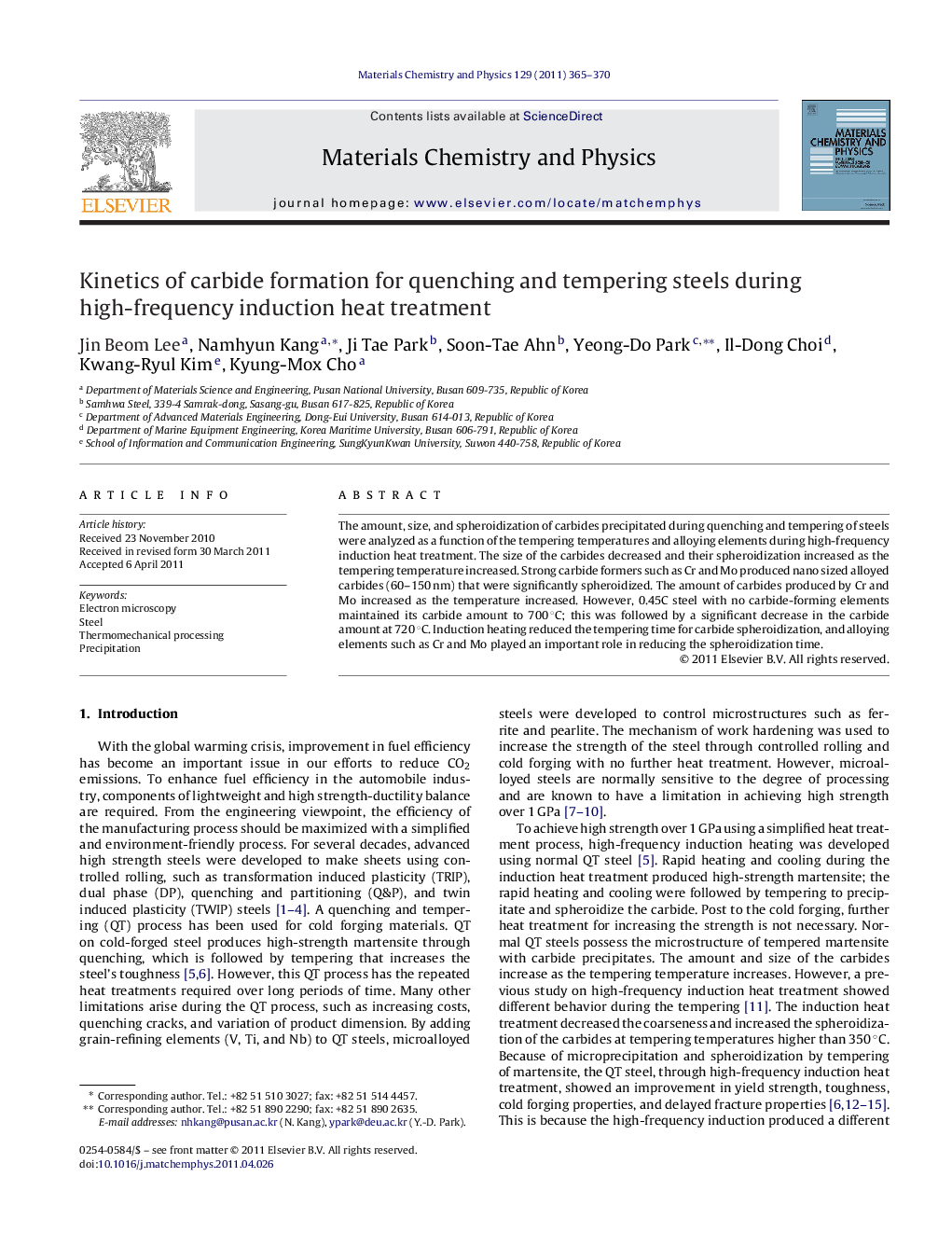| Article ID | Journal | Published Year | Pages | File Type |
|---|---|---|---|---|
| 1524542 | Materials Chemistry and Physics | 2011 | 6 Pages |
The amount, size, and spheroidization of carbides precipitated during quenching and tempering of steels were analyzed as a function of the tempering temperatures and alloying elements during high-frequency induction heat treatment. The size of the carbides decreased and their spheroidization increased as the tempering temperature increased. Strong carbide formers such as Cr and Mo produced nano sized alloyed carbides (60–150 nm) that were significantly spheroidized. The amount of carbides produced by Cr and Mo increased as the temperature increased. However, 0.45C steel with no carbide-forming elements maintained its carbide amount to 700 °C; this was followed by a significant decrease in the carbide amount at 720 °C. Induction heating reduced the tempering time for carbide spheroidization, and alloying elements such as Cr and Mo played an important role in reducing the spheroidization time.
► The high frequency induction heat treatment compared with normal heating system showed a different carbide size and, spheroidization during the tempering. ► The 0.2C–Cr and 0.2C–Cr–Mo steels produced less amount and finer size (60–150 nm) of carbides than the 0.45C steel. ► The 0.2C–Cr and 0.2C–Cr–Mo steels formed M3C2 at low temperature and M7C3, M3C, M23C6 at high temperature (720 °C). ► Strong carbide formers (Cr and Mo) increased the spheroidization and decreased the carbide size.
